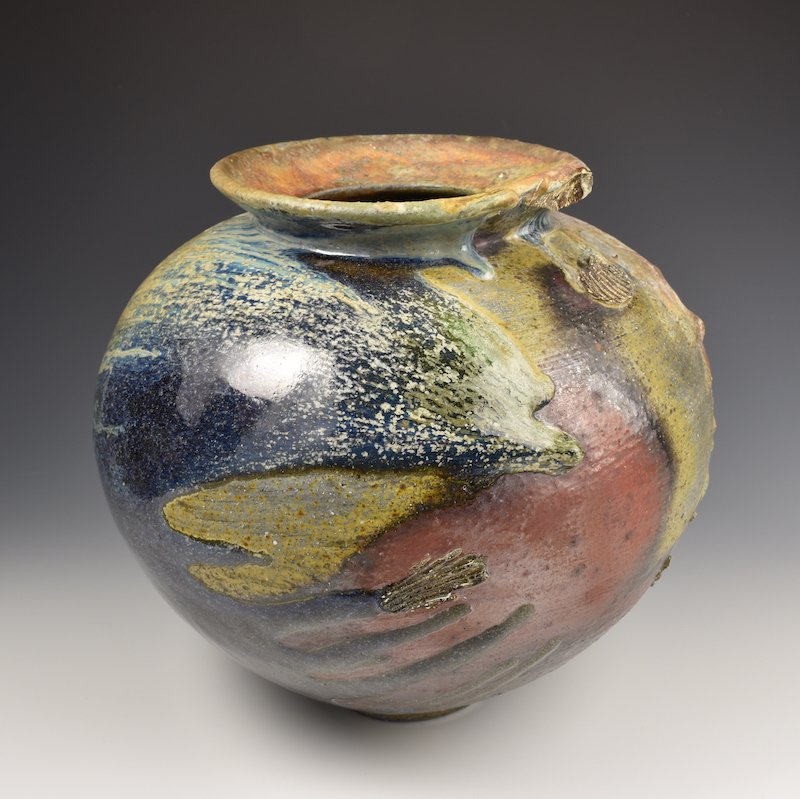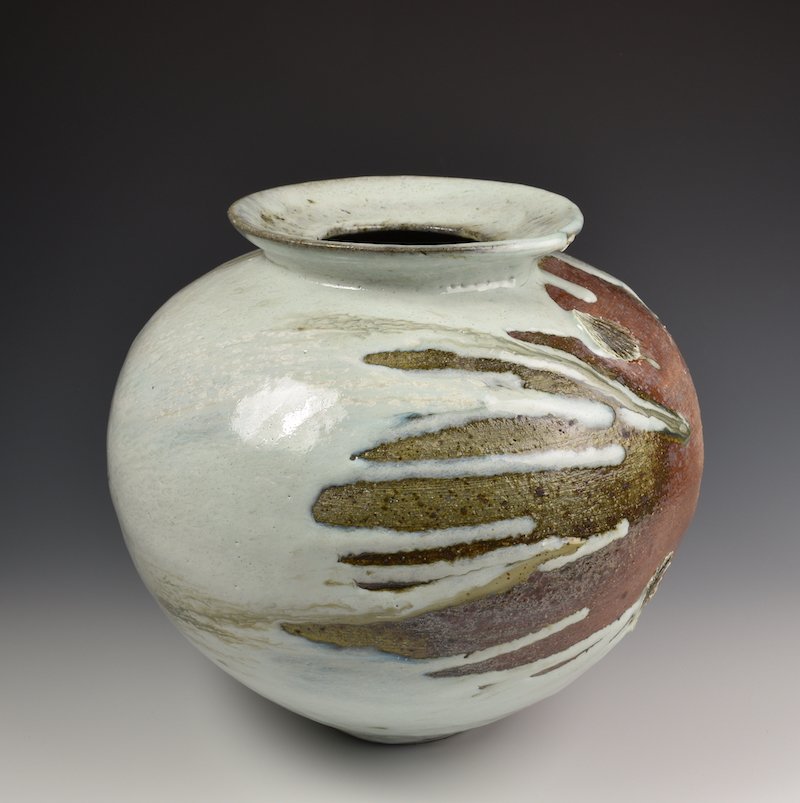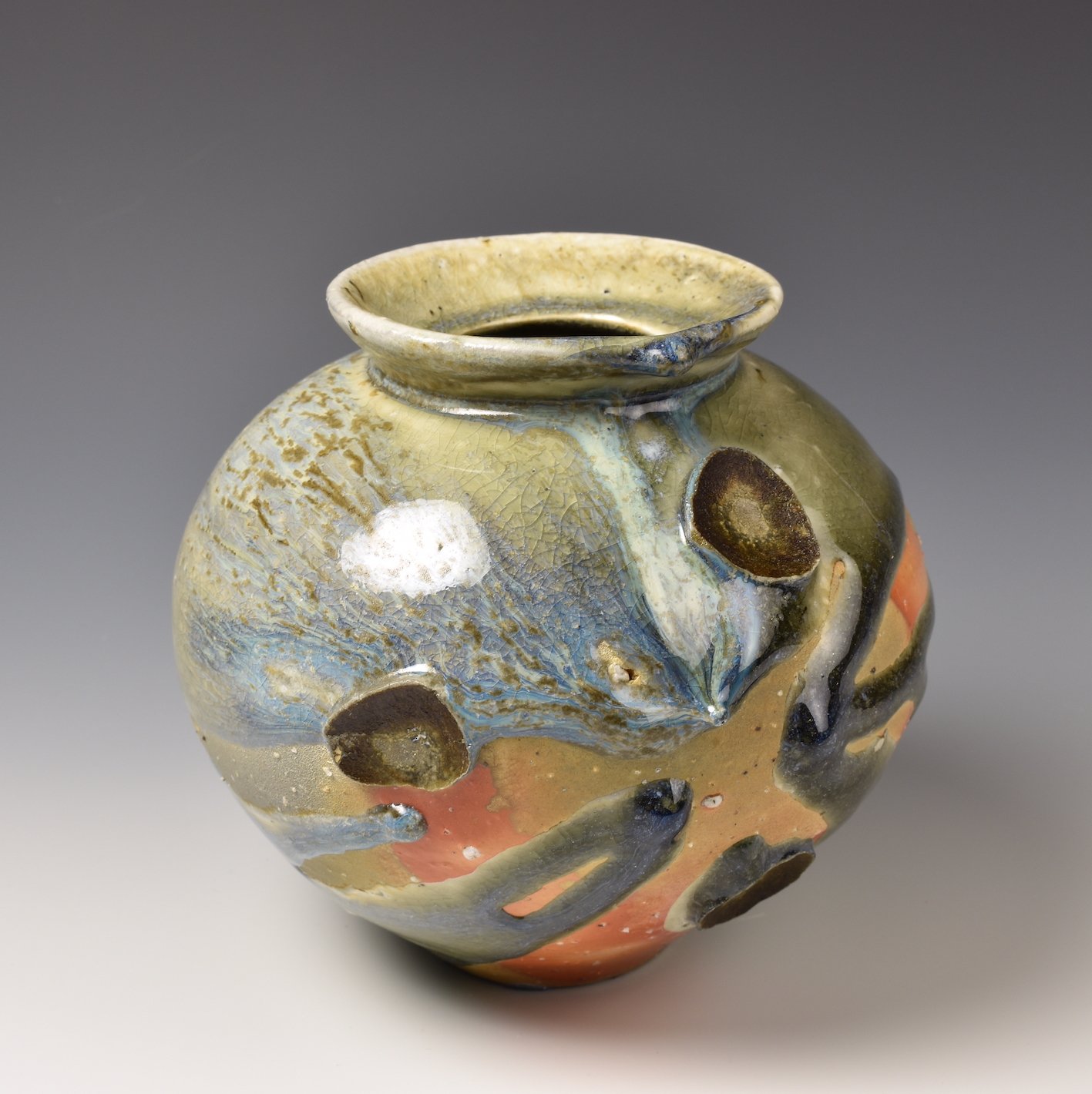The Ceramics Process by Matthew Blakely
“My work re-establishes the link between pottery and place, making pots entirely from rocks and clays I have collected from individual locations around the country. These place-specific pieces are made entirely from materials I have researched, collected, and prepared myself. The glazes are blends of a variety of local rocks, and so are ceramic representations of the geology of those places. The minerals present in these rocks produce all the colors and textures.
Provenance is fundamentally important. I know where every ingredient comes from, and I have collected it (having gained the necessary permissions) and prepared it myself. Time becomes an inescapable part of the working process, in which there are no shortcuts. Every rock must be crushed, ground, and sieved before being used. Hundreds of glaze tests have to be carried out before I am able to achieve my results.
I am very aware that pottery-making relies on the extraction of naturally occurring materials and requires energy to fire the pots, and I endeavor to work in ways that minimize my impact. I know the provenance of all the materials I use and collect them with respect for the places they come from and the people or organizations that own the land. None of these materials are toxic, and iron is the only colorant I use.
Firing requires a significant amount of energy, which I minimize. I have built thermally efficient kilns with designs that allow me to fire without producing much smoke. I use local wood that would otherwise be burnt as waste, such as coppicing trimmings from farm and byway management and branches and joints from fallen trees that are difficult to split. My firings are relatively short at 27 hours, though I am able to develop rich woodfired surfaces as I am particularly considerate of the most appropriate clays, slips, and glazes to use.
At stoneware temperatures, the entire geology of a place opens up to glaze formation. Nearly every rock and clay melts, though typically into an unpleasantly dark brown sludge. The time-consuming work begins now: crushing the stones in a steel mortar and pestle and milling them to powder, then countless tests to find the blends of rocks that create a beautiful glaze. This is not a process for someone who wants quick results.
The pieces that I make illustrate another way of looking at these materials and the colors and textures that they are capable of producing in the kiln: inspiration coming from the materials themselves, the qualities that they develop in firings, and the places that I have collected them from.
I work with a wide range of rocks and clays, using firing types and temperatures that bring out their best. My approach is becoming increasingly simpler, taking ceramics back to its essence. I use these unrefined materials as unrefined as possible, blending rocks from specific places to produce glazes that are entirely colored and textured by the mineralogy of these locations.
This work is fired in my wood kilns using waste wood that has grown where I live in Cambridgeshire. The firing transforms these glazes, producing exceptional qualities that would be impossible to achieve in any other way. That is what makes this work unique.
The process
Some rocks are intrinsically easier to use in ceramics than others: Clay is already made up of extremely fine particles, so it doesn’t need any grinding.
When it comes to testing, I often have a rough idea of the general makeup of the rock I use. Igneous rocks range from high in silica and low in iron to low in silica and high in iron. Sedimentary volcanic rocks follow this gradation, too. Other sedimentary rocks fall into a variety of petrologic categories. My tests are focused on using these generalizations to point me in the right direction to make a glaze, which means finding the balance of flux, alumina, and silica needed to make a glass. The simplest high-temperature glaze is a mixture of clay and calcium carbonate or an igneous rock and calcium carbonate alone, and some of the glazes I have developed are just this. The earliest stoneware glazes (developed in China) were simple clay and wood ash mixtures, the ash providing calcium. Nearly every glaze has some form of calcium in its recipe, and this is usually wood ash or limestone. Both of which are organic in origin.
In making a piece of pottery, there is a combination of the inorganic and the organic of rock and life. For me, the firing is a continuation of this relationship when dry or biscuit-fired ceramic work looks dead and lifeless, pallid and flat, like rough sketches of ideas. The firing, during which heat melts and fuses, gives the work life. This is particularly true of wood firing, where the firing process is predominant in creating ceramic surfaces. A firing, especially wood, is like alchemy – using elemental forces to transform common materials into something quite different. I absolutely love firing and the things that it can achieve. What other creative technique requires you to give up what you have made to the vagaries of chance? This allowance for chance is vitally important and makes the difference between something breathtaking and merely acceptable.
Another reason I am drawn to wood firing is that the process itself links everything to here: my workshop, my kiln, and the woods that grow around my home. During the firing, ash, carbon, and volatiles, such as potassium carbonate, from the wood are persistently driven through the kiln, landing on the surfaces of clay and glaze and becoming an intrinsic part of the surfaces formed. The impurities in the ash directly affect the type of glaze surface that forms.”
Matthew Blakely
Matthew grew up in the UK but it was only later that he had his first contact with the world of ceramics. He started studying medicine but quickly realized that he felt more fulfilled in the field of art when he first tried ceramic classes at university.
In 1988, he moved to Australia where he attended pottery classes in Bondi Beach and worked in a pottery workshop. He later graduated in Ceramics at the National Art School in Sydney where he was awarded a “State Medal” for the work he developed.
In 2002, he returned to the United Kingdom, where he lives and works to this day.
Join us for our Rocks Making Glazes Course.
An immersive journey guided by Matthew Blakely at Cerdeira - Home for Creativity.




